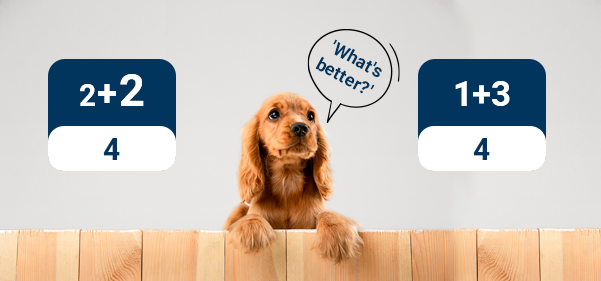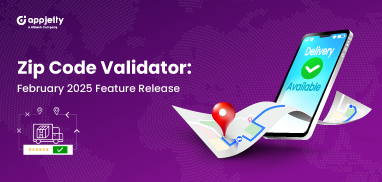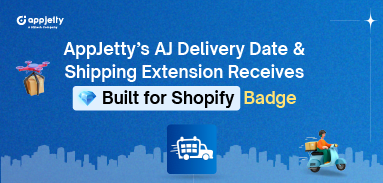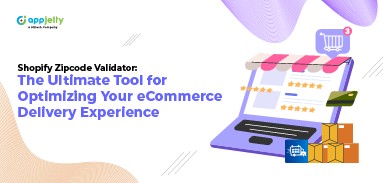“On visiting Closet London”
Tom started looking for a zip sweater for his wife. Julie, a salesgirl, rushed in to help him. And here’s how the story unfolded.
Julie: Hello sir, how can I help you?
Tom: I am looking for a zip sweater for my wife. One like that (pointing to the tan colored sweater on the nearest shelf)
Julie: Sure. May I know the size?
Tom: Size medium.
Julie: Here’s the one tan zip sweater. Size medium. Would you like to look more? We have this multi-color sheer scarf that goes great with that top. Customers who purchase this sweater also purchase this scarf for only $25 more.
Tom: Do you have a similar scarf, in say, ‘black’?
Julie: We do.
Tom: Okay. Let’s throw that in as well.
This is how Tom got tricked in cross-selling and upselling too. I am sure he doesn’t mind as long as his wife is happy. We see these kinds of strategies all over – in stores, checkout counters, and even while shopping online. Because they have obvious benefits for the company. One benefit is certain – more revenue.
Back in 2016, Amazon reported that upselling and cross-selling amount to 35 percent of their total revenue. Product recommendations account for 10-30 percent of eCommerce sites revenue. The number might have surely doubled or perhaps tripled by now. There’s no doubt that upselling and cross-selling won’t work for you.
Upselling and cross-selling offer more than revenue.
- Increasing the order size by offering better or multiple products.
- Personalizing the shopping experience with relevant suggestions.
- Making shopping convenient with a one-stop-shopping experience.
- Helping customers choose the right product for them and ensuring they have everything needed to use that product.
To figure out which business strategy works best for you, try all the selling techniques.
Hence, today we will show you:
- Difference Between Upselling, Cross-selling, and Down selling
- Another Popular Selling Technique
- Spots where you can Implement all the Selling Techniques
- Upselling and Cross-selling Ideas and Tactics
- How and How Not to Upsell and Cross-sell
- Expert Idea that’ll Surely Work
Difference between Upselling, Cross-Selling, and Down Selling
All these three techniques are sisters of selling.
- In upselling techniques, you persuade the customers to upgrade or buy an expensive product instead of the one they originally intended to purchase—something with better features, better materials, etc. For example, warranty upgrades like AppleCare, McDonald’s salesperson asking to upgrade the drink, a mobile retailer pitching a better model.
- Cross-selling means selling additional products/services to customers that are related to the products they buy. Generally, this technique is used to increase profits, but you can use it to solidify the relations with recently viewed and related products features. Examples include – travel companies offering travel/health insurance, Amazon’s “what other customers bought with this product” section.
- Down selling technique is used when customers decide to back down from the purchase due to some reason. In this case, you can offer them a budget-friendly alternative that they are likely to purchase. The goal of down-selling is to acquire customers even if profit margins are low. One good example started when I was looking for a property. The agents showed me all the lavish properties that were out of my budget, and after a few rejections, they showed me the budget-friendly options, which in reality were far less than my budget. This is how I got tricked into down-sell.
Upsell and cross-sell require different products, so using similar products will be absurd.
Here’s how you should sell apparel.
- Upsell the same dress – suggest a high price by describing the quality of the material, work, etc.
- While a customer is about to buy the product, i.e., dress, cross-sell on the checkout page – offer bottoms or accessories that go with the dress.
- If you think that customer is/has abandoned the cart, proceed with the down-sell. Show them alternative options. Send messages and emails with similar dress alternatives with a few changes in the design or the material.
Remember: Upselling, cross-selling, and down selling are complimentary. With proper planning, you can benefit from them all.
There’s another selling technique, bundling, which is more likely an offspring of upselling and cross-selling. Here’s more about it.
Bundling: The Popular Selling Technique
Product bundling is a selling technique in which several products (main and auxiliary products) are grouped together and sold as a single unit. McDonald Happy Meals are an example of product bundles. Other examples include beach kits, shampoo, and conditioner sets. Oh, here’s an example of Nikon’s compelling offer.
Bundling is often used with discounts to increase the total value of the offer. There are various bundle apps available in the market. CommerceXpand, for example, is the best bundle app for Shopify. Product Bundles by Somewherecharm is a recommended choice for WooCommerce. The list goes on…
Product bundles are of two types – pure bundles and mixed bundles.
Pure Bundles
This includes a combination of products that customers can’t buy individually. For example, an all-inclusive resort package. It means you can only purchase a bundle that includes lodging, meals, drinks, sports, etc. You don’t have the option to purchase items individually. Workcation packages are another example of pure bundles.
Mixed Bundles
Mixed bundling allows you to buy products individually and in bundles (the price of which is less than the sum of total individual prices). The set of Harry Potter books (Gryffindor edition) is one of the examples of mixed bundling.
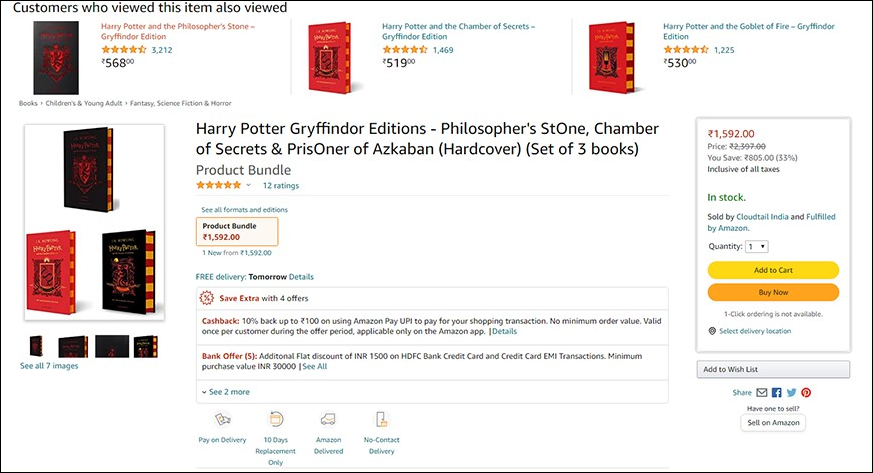
Amazon’s ‘frequently bought together’ section is a great example of mixed bundling.
If you’re looking for the best bundle app for Shopify, try CommerceXpand. The app is a collection of 25+ apps that helps boost conversions and increase sales. CommerceXpand Product Bundle lets you create custom bundles based on categories, prices, and other attributes.
What Selling Strategy You Should Implement
It’s not about choosing one strategy. It’s about implementing all the strategies, running A/B testing, and understanding what works better in a particular situation. Not all your customers will buy expensive products, nor will everyone be interested in buying multiple products. In such a case, down-selling will be your dark knight.
Let’s take an example to understand the implementation strategy.

Suppose a customer decides to purchase a MacBook. On landing on the Apple Store, they can view Macbooks with different configuration options for RAM, storage, etc. The customer has the option to upgrade while configuring the Mac. That’s how upselling works. If you have a product with a customization option, upsell it.
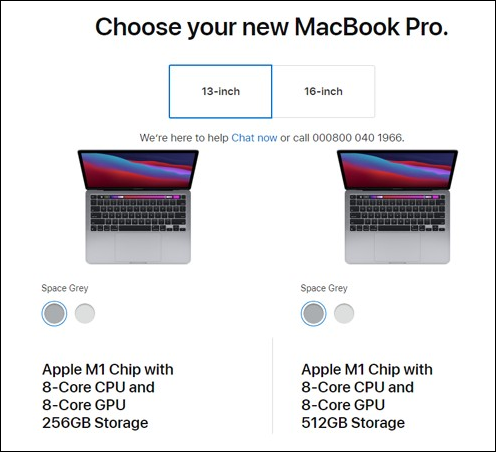
Now, along with configuration options, Apple offers additional 2-3 years warranty services at a minimum price – that’s cross-selling. Now, say, the price of the configured Mac is too high for the customer, so Apple recommends the base model.
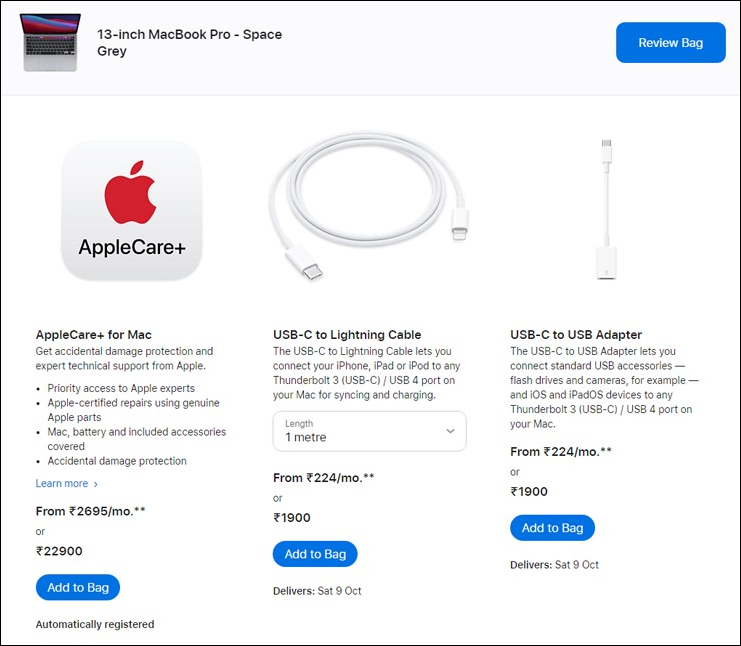
With one product, Apple implemented all the strategies. A product bundle consisting of a laptop, mouse, laptop bag, AirPods will include bundling too.
Hot Spots to Leverage Upsell and Cross-sell
Before you dive into the ideas that make a difference, check out some email and website spots where you can implement upsell and cross-sell.
Product Page
You can present additional purchase options in the popup window or sidebar on the products page. You can also display the related products in – You Might Also Like, Similar Items, Recently Viewed, and Related Products sections at the bottom of the product page. Buttons like Quick Buy and Sticky Add to Cart can help you speed up the purchase.
Here’s H&M’s styling method
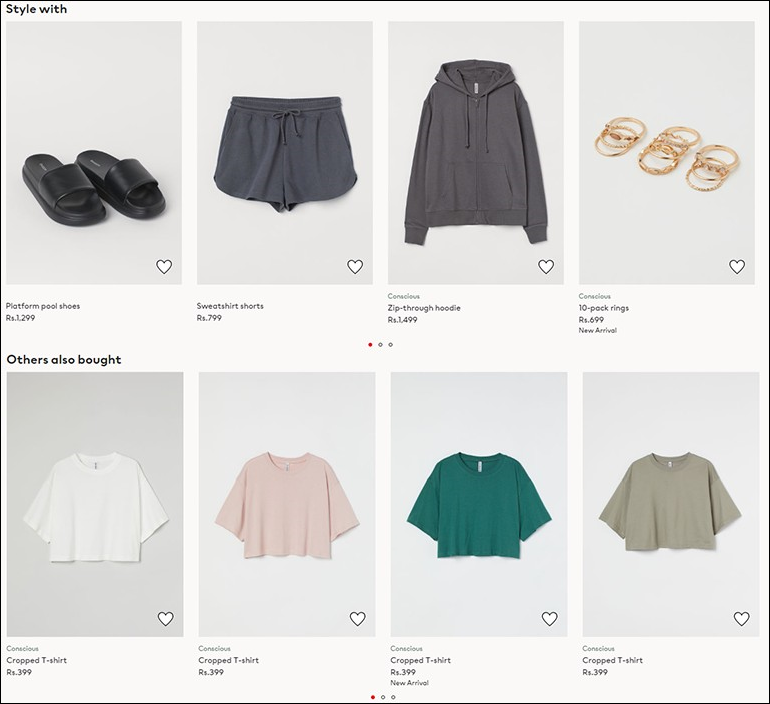
Checkout Page
Implement cross-selling on the checkout page with sections like – Frequently Bought Together and Related Products. You can even offer product bundles on the checkout page.
A stellar example is Target.

Thank you Page/Email
Thank you pages and emails are great for upselling as customers have already purchased the product. You can pitch them other quality products. For example, you can add an image carousel at the bottom of your post-purchase email to entice customers to revisit your website.
See how Alibaba uses its confirmation email to recommend personalized products.
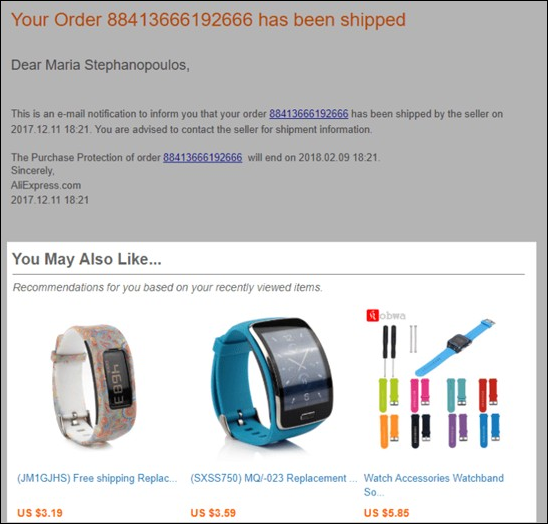
Now let’s proceed to upsell and cross-sell ideas with examples.
Effective Upselling and Cross-Selling Ideas
The most common way to upsell is to offer a better model. But if that counts for only 5 percent of the target audience, the profit margin is thin.
Hence, you should strategize when upselling and cross-selling will be effective. Bifurcate the tactics into pre-purchase and post-purchase strategies.
Pre-Purchase Sell
Pre-purchase upsell happens before the purchase. You can show relevant products on the product page or cart page before the purchase. It’s great for free gifts, small purchases with less risk, which doesn’t require more information on the product.
Here are some ways you can trigger upsell and cross-sell before product purchase.
Use FOMO
Create a sense of urgency. Offer discounts on products for a limited time. FOMOs are proven to boost conversions.
Ulta Beauty’s 21 Days of Beauty event is the most awaited beauty sales event offering 50 percent off on exclusive brands.
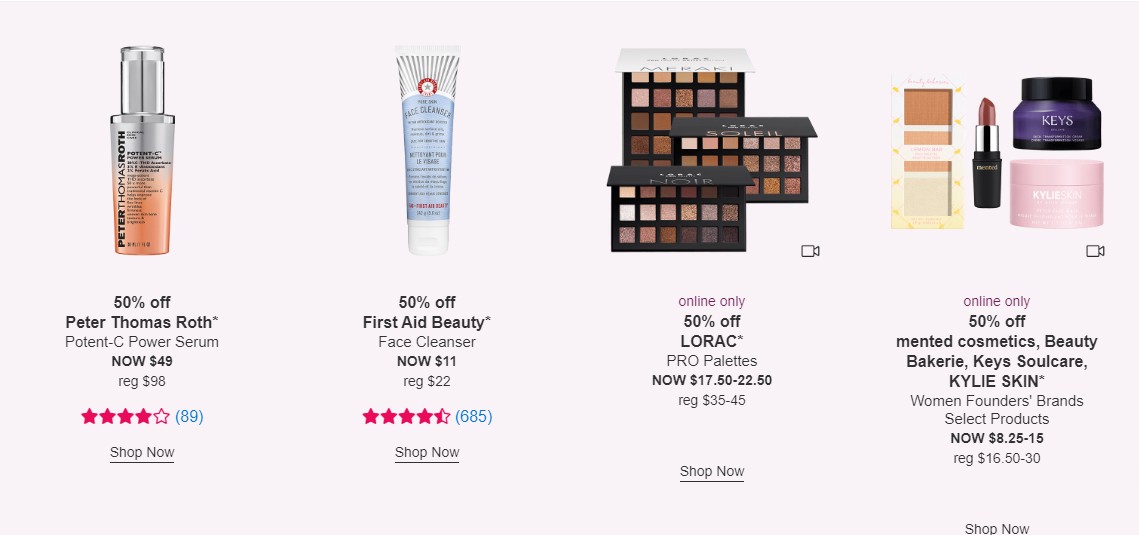
Source: Ulta
This offer lasts for 21 days with exciting daily deals. Despite 21 days, the actual offer on the product customer wants – lasts only for a little time.
Use various FOMO examples such as deal of the day, stock left, early bird offer, missed opportunities, and countdown timer to get instant results. Combine the stock left with a countdown timer and witness the results yourself.
Offer Bulk Purchase
Some products don’t go off the shell quickly, like toilet paper and pet food. Hence, you can offer free shipping on bulk purchases of those products. You can also encourage customers to buy other products in bulk with personalized pricing, flat/percentage discounts, tiered pricing, BOGO, redeemable reward points, pre-orders, and back-in-stock alerts.
Pre cross-sell offer will look like this:

Source: petsutra
Compare Products
Comparison of products can help you upsell and down-sell as visitors know about other versions and models and the features. They can visualize the value they will get with high-priced items and low-priced items. You can implement this strategy for comparing your products with other brands too.
For product comparison, the best examples are the Shopify apps that offer various subscription packages like monthly charges, a one-time charge, etc.
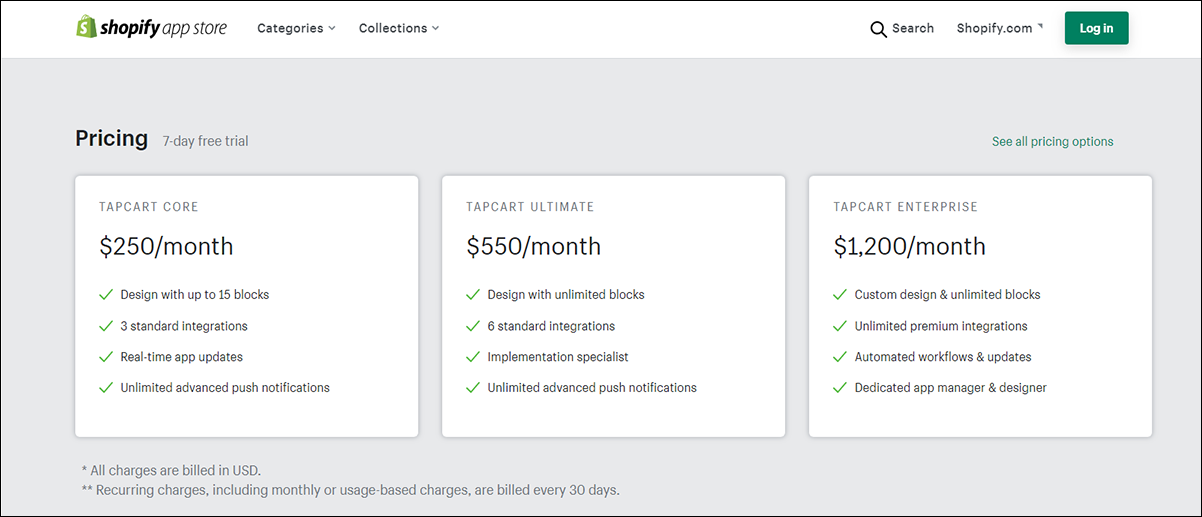
CommerceXpand is a product bundle that lets you compare products and bulk edit product details to ensure that price and calculations are accurate. Moreover, you can take pre-orders and avoid cart abandonment with reminders and back-in-store alerts.
Reward Your Customers
A reward system is a sure-shot way to upsell. You can offer customers discounts on products or total purchase amount. Free shipping, buy one get one, referrals, points are other ways to entice your customers in pre-purchase. The reward strategy also works better for post-purchase upsell. We shall see this in the post-purchase section.
Show Your Social Reach
Product reviews = customer credibility.
The 5-star rating and positive feedback encourage customers with doubt to proceed with the purchase. There are several ways you can win customer trust.
- Product Reviews
- Sales announcements
- Logo and partnership badges
You can also import product reviews across all the marketplaces you sell products into Shopify to strengthen the customers’ buying decisions. Star-rating with a total number of product reviews will also help build trust. The best thing is that all these features are available in CommerceXpand.
Tip: If you want to capture more leads, add Announcement Bars to provide store-wide information to customers in an impressive way. Announce sales, limited-time offers, or product promotional discounts store-wide to reach customers and attract more purchases.
Use Customer Support
Sometimes reviews might not be enough to convince customers, or they may face some difficulty purchasing. In such cases, a helping hand can guide customers in the right way. A great way to help customers is a live chat. They can reach the support team and get answers. Other ways include knowledge base and feedback campaigns.
The advantage of these features is that you can analyze the live chat, reviews, feedback, comments, and identify what annoys customers the most, and use it to upsell. For example, late-delivery irks customers the most. You can offer an express delivery option for a higher price.
While planning ways to upsell using the customer data, always think about offering value first. For that, a detailed description is an apt idea. When customers know about products in detail, they are more likely to buy the product.
If you use multiple plugins to handle all the customer data and orders, it can be inconvenient. CommerceXpand integrates with your CRM, and as it covers 25+ apps in one, you won’t have to switch between different plugins. Most importantly, this all-in-one package offers live messenger chat. Your customers don’t even have to visit your store to contact the support team.
Post-Purchase Sell
We keep thinking about ways to upsell before the purchase. We want customers to make big purchases on the first visit. However, that doesn’t always work. Sometimes, you need to give them a taste of your products and services before you upsell.
Here’s how
- Complementary products: Recommend products that complement the products customers have purchased. The relevance will likely make them purchase rather than a random product recommendation.
- Discount products: Give discount coupons or offers that they can redeem on the next purchase. With that, showcase the items they can purchase with that coupon.
- Gifts: If customers opt for upselling, offer freebies along with the purchase. This increases sales as customers get more for their money.
- Trial Packs/Samples: Small trials of products before a purchase can lead to a large purchase. Offer free samples with every upsell to boost sales and raise awareness of other products.
- Additional services: Offer additional products/services along with the upsell products. You can create bundles and encourage customers to buy or offer cheap and convenient services like sustainable packaging and gift wraps.
Upsell during the consultation, while customers browse through your store, during the purchase, during checkout, seasonal offers, and training.
Grab all the opportunities where you can upsell. But it should tune in to your customers’ needs.
Tips on How and How Not to Upsell
If you can convince your customers that your suggestions will benefit them, then you can master upselling and cross-selling. But what about the dos and don’ts?
Upsell and Cross-Sell Tips
Narrow Down the Choices
Too many choices create a dilemma. Here’s how Professor Iyengar and her assistants concluded this with a study on the effect of choices in the California Gourmet Market.
They set up the Wilkin and Sons Jams booth – where one offered assortments of 24 jams while another had only 6. 60 percent of people visited the larger booth with 24 varieties, while 40 percent visited the smaller one. However, only 3 percent of those 60 percent made a purchase, whereas 30 percent of visitors at the smaller booth went on with a purchase.
Tip: Don’t bombard your customers with multiple choices. If they said no to an upsell, do not push it. Upsell should be suggestive and not a selling technique.
Offer Product Bundles
Every action that users take involves multiple steps. Implement strategies to reduce it in a buying decision.
Product bundles are an effective way to get over those unnecessary multiple steps. As all the relevant products are available in one go, customers’ don’t have to go through the individual buying process again. Also, individual buying involves more decision-making. Hence, you need to understand how we make decisions.
Tip: Mix popular products with the least popular ones or create product bundles combining products that don’t go off the shelf quickly with those in demand. Experiment with different types of bundles and see what works best for you.
Try CommerceXpand – the best bundle app for Shopify. With it, you can create various bundles, including matching products, unsuitable products, categories, and more.
Use Price Anchoring
The best way to sell a $2000 dress is to put it next to the $1000 dress. The reason is the cognitive bias called price anchoring. You can play with their perception of the fair price according to the products you want them to buy. For example, if you want them to buy a mid-level DSLR. Explain how it will help them win. Show them a mid-level DSLR with no add-ons and with add-ons at a higher price and then the value the one with add-ons offers.
Take Data-Driven Approach
Use sales data and customer behavior to make smart decisions. Choose products that customers tend to buy more. For example, if there’s a trend of product pairing, you know that’s an opportunity to upsell.
Hence, have data and always keep a check on it. Also, check the upsell campaigns to learn how customers perceive and convert to buyers.
Other methods include – personalization, value proposition, constant communication, and post-purchase cross-sell.
How NOT to Upsell or Cross-sell
Here’s what you shouldn’t do:
- Don’t make it expensive: People buy with an approx budget in mind. Trying to make them more than 25 percent of their budget may backfire.
- Avoid too many options: Too many choices confuse people. So, offer limited but personalized options.
- Don’t push too hard: Suggest and recommend products but don’t force them to buy them. Give them the freedom to decide.
The last tip that you should consider from this post is – integrate the Shopify app that helps you manage store operations and drive sales.
CommerceXpand: The Best Approach to Upsell
Selling is hard, but with the right tools and guidance, you can master upsell and cross-sell.
If you need any help in Shopify store management, you can always turn to CommerceXpand – an all-in-one Shopify app. The 25+ apps cater to various business requirements, helping Shopify store owners fasten up their upsell game.
All product and company names are trademarks™, registered® or copyright© trademarks of their respective holders. Use of them does not imply any affiliation with or endorsement by them.


